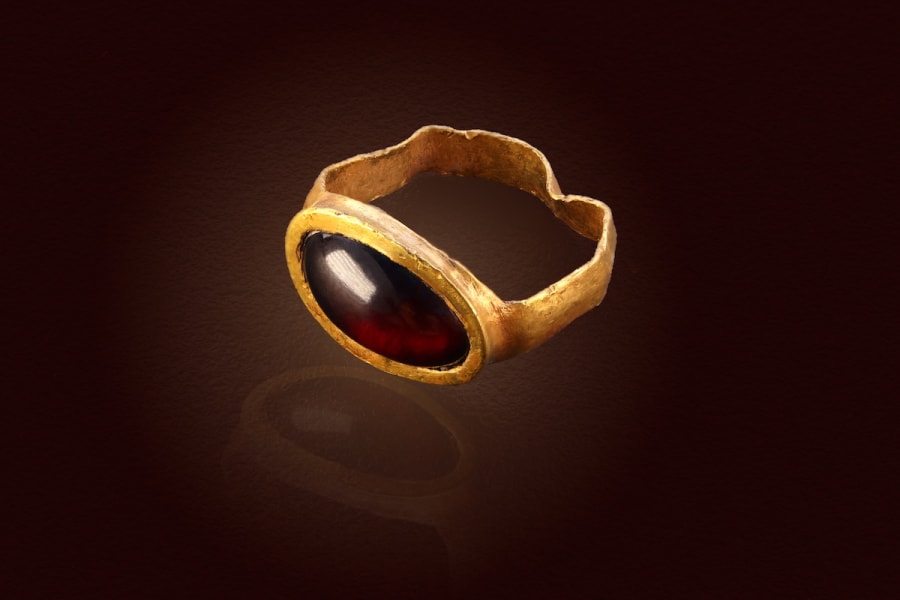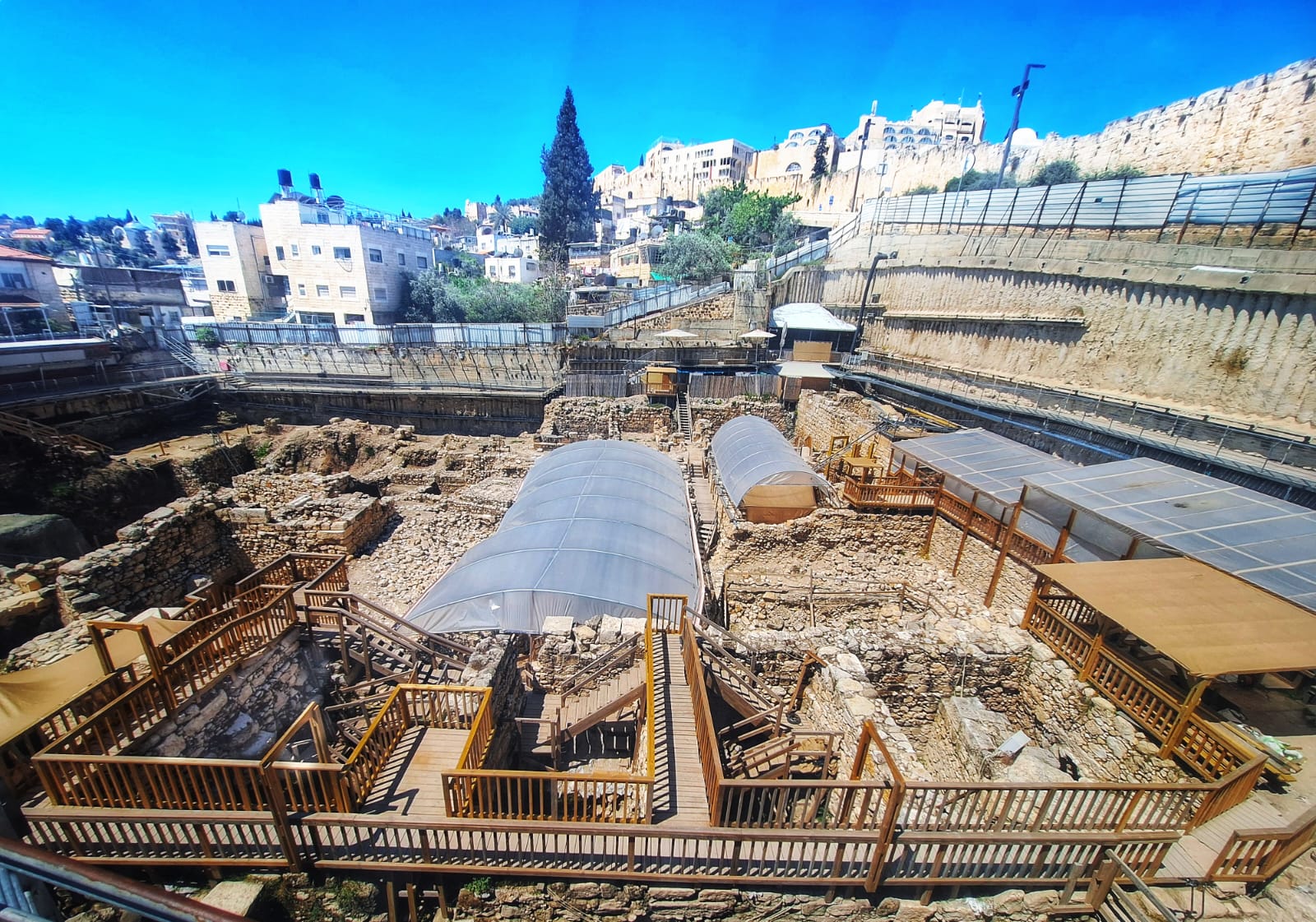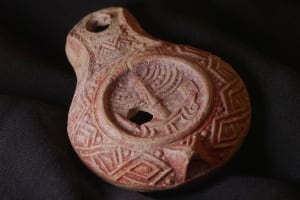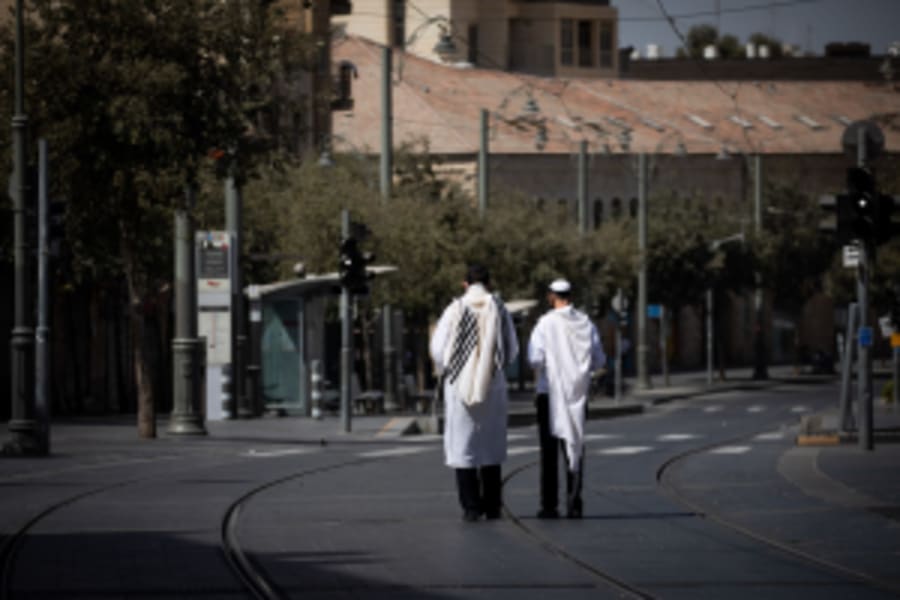Tiny treasure discovered in Jerusalem's City of David: Second gold ring found in less than a year

A beautiful little ring, one that would fit only a child, has been discovered in the ongoing excavations at the City of David. Experts estimate it dates back to the early Second Temple period, making it approximately 2,300 years old. Remarkably, this was the second such ring discovered at the site, and from the same Hellenistic era.
Excavations at the City of David are being carried out by the Israel Antiquities Authority together with Tel Aviv University in the Jerusalem Walls National Park, funded by the Elad Association. Rivka Lengler from the excavation team talked about the moment the second ring was found:
“We sifted the dirt through a sieve, right near the excavation area, and suddenly Ben, who works with me, pulls a gold ring out of the dirt. At first, he was sure it must be a modern item dropped by one of our excavators, but when I examined the ring, I immediately assessed it as something ancient,” she said.
Lenger continued, “We called over the archaeologists, everyone gathered around us and marveled at the special find. It was very exciting. Already at first glance, you could see its great similarity to the ring discovered in our excavation only a few months ago, just that this one was even smaller. When I held this ring in my hand, I felt part of my history. I felt that I could actually touch and connect with the people who lived here in Jerusalem thousands of years ago.”
The small gold ring is set with a red gemstone, thought to be a garnet, and typical of the era. Colored precious stones had been brought to the land by Alexander the Great, and were set in gold in the style of the ring that was discovered.
Excavation managers Dr. Yiftah Shalev and Dr. Marion Zindel from the Israel Antiquities Authority, together with Efrat Bocher from the Ancient Jerusalem Research Center, and Prof. Yuval Gadot from Tel Aviv University gave their assessment in a statement, saying,
“The two gold rings were discovered in a layer dating to the late 3rd century or early 2nd century BCE, set in the foundations of a large building which bears witness to its occupants’ wealth. In the same stratum in which these rings were unearthed, a number of bronze earrings were also recently found. And it is in this very same stratum that a gold earring decorated with a horned animal image and a decorated gold bead were also discovered – all dating from the Early Hellenistic period.”

According to the researchers, “Jewelry that combines gold with brightly colored precious stones, such as the garnet stone, were well-known from this period, in which fashion was influenced by Eastern countries such as India and Persia. These fashionable influences were enabled thanks to Alexander the Great’s conquests, and the consequent trade channels opening with these regions.”
Dr. Marion Zindel, who is conducting research on the ring, has presented an interesting theory as to why the rings may have been buried there. He said, ”That the two small rings and the rest of the jewelry were all discovered under the building’s floors raises the possibility that they were buried there on purpose. One of the possibilities now being examined is that the jewelry found in the building’s foundations was in the context of executing of a well-known Hellenistic period custom in which betrothed women would bury jewelry and other childhood objects in the house foundations as a symbol of the transition from childhood to adulthood.”
According to Efrat Bocher, one of the excavation managers, “This is the first time that we have found in Jerusalem such a large assemblage of gold jewelry from that period. This displayed wealth is very rare in any archaeological layer, and it attests to the wealth of Jerusalem and the high standard of living of the city’s residents during this period.”
Director of the Israel Antiquities Authority, Eli Escusido, said, “The discovery of the golden rings from the time of the Second Temple in the City of David is tangible evidence of the wealth, beauty and importance of Jerusalem even thousands of years ago. The Israel Antiquities Authority is proud to lead the archaeological research of Jerusalem, and to make accessible to the public the heritage of “Jerusalem of Gold” – not just as words in a song, but as historical facts uncovered right under our feet.”

Jo Elizabeth has a great interest in politics and cultural developments, studying Social Policy for her first degree and gaining a Masters in Jewish Philosophy from Haifa University, but she loves to write about the Bible and its primary subject, the God of Israel. As a writer, Jo spends her time between the UK and Jerusalem, Israel.
You might also like to read this:
















